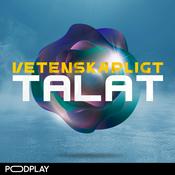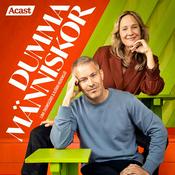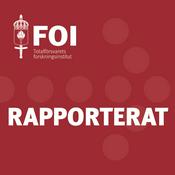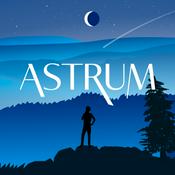1079 avsnitt

FHT Baseline Change (110-160) in Labor: Danger, or Disregard?
2025-12-27 | 24 min.
In 2002, the National Institute of Child Health and Human Development (NICHD) proposed the 3-Tier fetal heart rate (FHR) classification system that was subsequently adopted by many organizations, categorizing tracings into three groups: Category I (normal), Category II (indeterminate), and Category III (abnormal). Recently, our podcast team received an interesting question form one of our podcast family members: “If there is a change in the fetal heart rate tracing intrapartum, but it is still in the normal range (like 120 going to 150)- and variability is normal, is that an abnormality? And what is meant by a ‘ZigZag’ FHT pattern (different than marked variability)?”. That is a fantastically complex question…and we will explain the answer in this episode.1. Zullo F, Di Mascio D, Raghuraman N, Wagner S, Brunelli R, Giancotti A, Mendez-Figueroa H, Cahill AG, Gupta M, Berghella V, Blackwell SC, Chauhan SP. Three-tiered fetal heart rate interpretation system and adverse neonatal and maternal outcomes: a systematic review and meta-analysis. Am J Obstet Gynecol. 2023 Oct;229(4):377-387. doi: 10.1016/j.ajog.2023.04.008. Epub 2023 Apr 11. PMID: 37044237.2. Ghi T, Di Pasquo E, Dall'Asta A, et al. Intrapartum Fetal Heart Rate Between 150 and 160 BPM at or After 40 Weeks and Labor Outcome.Acta Obstetricia Et Gynecologica Scandinavica. 2021;100(3):548-554. doi:10.1111/aogs.14024.3. The 3 Tier System: chrome-extension://efaidnbmnnnibpcajpcglclefindmkaj/https://ncc-efm.org/filz/NICHD_Reference_from_CCPR.pdf4. Jia YJ, Ghi T, Pereira S, Gracia Perez-Bonfils A, Chandraharan E. Pathophysiological Interpretation of Fetal Heart Rate Tracings in Clinical Practice. American Journal of Obstetrics and Gynecology. 2023;228(6):622-644. doi:10.1016/j.ajog.2022.05.0235. Ghi T, Di Pasquo E, Dall'Asta A, et al. Intrapartum Fetal Heart Rate Between 150 and 160 BPM at or After 40 Weeks and Labor Outcome. Acta Obstetricia Et Gynecologica Scandinavica. 2021;100(3):548-554. doi:10.1111/aogs.14024.6. Yang M, Stout MJ, López JD, Colvin R, Macones GA, Cahill AG. Association of Fetal Heart Rate Baseline Change and Neonatal Outcomes. Am J Perinatol. 2017 Jul;34(9):879-886. doi: 10.1055/s-0037-1600911. Epub 2017 Mar 16. PMID: 28301895.

PFM Question: IAI WITHOUT Fever?
2025-12-24 | 19 min.
Podcast Family, in our immediate past episode we tackled the discrepancy that is often found between a clinical diagnosis of intra-amniotic infection/chorioamnionitis and histological chorioamnionitis. From that episode, we received a fantastic question from one of our podcast family members: Can a patient have IAI without fever? That question is really deep and highlights a gap in the current diagnostic scheme/ criteria from the ACOG. Listen in for details!1. ACOG CO 7122. Sukumaran S, Pereira V, Mallur S, Chandraharan E. Cardiotocograph (CTG) Changes and Maternal and Neonatal Outcomes in Chorioamnionitis and/or Funisitis Confirmed on Histopathology. European Journal of Obstetrics, Gynecology, and Reproductive Biology. 2021. C3. Romero R, Chaemsaithong P, Korzeniewski SJ, et al. Clinical Chorioamnionitis at Term III: How Well Do Clinical Criteria Perform in the Identification of Proven Intra-Amniotic Infection? Journal of Perinatal Medicine. 2015.

Chorio Paradox: When Clinical & Path DX Don’t Agree
2025-12-21 | 23 min.
Welcome to "Labor & Delivery Debrief," the podcast where we tackle your toughest questions about childbirth and maternal health. Today, we're diving deep into a fascinating and critical topic sent in by one of our listeners, Sarah. Sarah asks: "Is it possible for a clinical diagnosis of chorioamnionitis to not be confirmed by placental histology? And if so, how is that possible?" This is a fantastic question that touches on the complexities of intrapartum clinical diagnosis of intraamniotic infection (IAI), also commonly known as chorioamnionitis. We'll explore the nuances of clinical versus histological findings, the diagnostic criteria, and why these two assessments don't always perfectly align. Get ready for a detailed discussion that will shed light on this important aspect of obstetric care.1. ACOG CO 712; 2017 (2025)2. Romero R, Pacora P, Kusanovic JP, et al. Clinical Chorioamnionitis at Term X: Microbiology, Clinical Signs, Placental Pathology, and Neonatal Bacteremia - Implications for Clinical Care. Journal of Perinatal Medicine. 2021;49(3):275-298. doi:10.1515/jpm-2020-0297.3. Jung E, Romero R, Suksai M, et al. Clinical Chorioamnionitis at Term: Definition, Pathogenesis, Microbiology, Diagnosis, and Treatment. AJOG. 2024;230(3S):S807-S840. doi:10.1016/j.ajog.2023.02.002.4. Oh KJ, Kim SM, Hong JS, et al. Twenty-Four Percent of Patients With Clinical Chorioamnionitis in Preterm Gestations Have No Evidence Of either Culture-Proven Intraamniotic Infection Or intraamniotic Inflammation. AJOG. 2017;216(6):604.e1-604.e11.

WARNING: DepoP and Meningiomas
2025-12-18 | 20 min.
Depo-Provera was approved in 1992 by U.S. regulators. About 1 in 4 sexually active women in the United States have used the shot at some point, according to the U.S. Centers for Disease Control and Prevention (CDC). Meningiomas are common intracranial tumors with a female predominance. In fact, they are the most common primary brain tumor in women, with an incidence of approximately 12.76 per 100,000 in the general female population. The vast majority of these tumors are benign (World Health Organization [WHO] grade 1) while 15% to 20% of these tumors can behave atypically (WHO grade 2) and rarely, in 1% to 2% of cases, these tumors can be malignant (WHO grade 3). We covered the relationship between Depo-Provera, as a contraceptive agent, and brain meningiomas back in March 2024. With the increase in data, the ACOG released a patient centered counseling tool titled, “Counseling Patients on Birth Control Injection and Meningioma”. The most recent update on this story comes from the FDA, which has granted a medication label change to Depo-Provera (Pfizer) warning of this association. Even though association does not prove causation, the association between depo and meningiomas seems strong (with new data from the US). Does this warning extend to other progestins? Listen in for details. 1. https://podcasts.apple.com/us/podcast/dr-chapas-obgyn-clinical-pearls/id1412385746?i=10006508795722. ACOG’s “Counseling Patients on Birth Control Injection and Meningioma” 3. https://www.statnews.com/pharmalot/2025/12/17/fda-pfizer-contraception-cancer-preemption-depoprovera/4. Xiao T, Kumar P, Lobbous M, et al. Depot Medroxyprogesterone Acetate and Risk of Meningioma in the US. JAMA Neurology. 2025;82(11):1094-1102. doi:10.1001/jamaneurol.2025.3011.5. de Dios E, Näslund O, Choudhry M, et al.Prevalence and Symptoms of Incidental Meningiomas: A Population-Based Study.Acta Neurochirurgica. 2025;167(1):98. doi:10.1007/s00701-025-06506-7.6. Schaff LR, Mellinghoff IK.Glioblastoma and Other Primary Brain Malignancies in Adults: A Review. JAMA. 2023;329(7):574-587. doi:10.1001/jama.2023.0023.7. BMJ 2024; 384 doi: https://doi.org/10.1136/bmj-2023-078078 (Published 27 March 2024) Cite this as: BMJ 2024;384:e078078

Lube It Up For Baby Delivery?
2025-12-17 | 19 min.
The second stage of labor, characterized by active pushing and the descent of the fetal head, can be a challenging and prolonged phase for both mother and baby. Various interventions have been explored to optimize this stage, and one such technique involves the application of vaginal lubricants. The rationale behind this approach is to reduce friction between the fetal head and the birth canal, potentially leading to smoother and faster delivery. Does this seemingly simple technique work? Does the ACOG mention this in the CPG 8 from January 2024? What does the latest research tell us about its effectiveness in assisting or speeding up the birthing process? Listen in for details.1. Yang Q, Cao X, Hu S, Sun M, Lai H, Hou L, Wang Q, Wu C, Wu Y, Xiao L, Luo X, Tian J, Ge L, Shi L. Lubricant for reducing perineal trauma: A systematic review and meta-analysis of randomized controlled trials. J Obstet Gynaecol Res. 2022 Nov;48(11):2807-2820. doi: 10.1111/jog.15399. Epub 2022 Aug 16. PMID: 36319196.2. ACOG: First and Second Stage Labor Management Clinical Practice Guideline Number 8: January 20243. Aquino CI, Saccone G, Troisi J, Zullo F, Guida M, Berghella V. Use of lubricant gel to shorten the second stage of labor during vaginal delivery. J Matern Fetal Neonatal Med. 2019 Dec;32(24):4166-4173. doi: 10.1080/14767058.2018.1482271. Epub 2018 Jun 27. PMID: 29804505.4. Beckmann MM, Stock OM. Antenatal Perineal Massage for Reducing Perineal Trauma. The Cochrane Database of Systematic Reviews. 2013;(4):CD005123. doi:10.1002/14651858.CD005123.pub3.
Fler podcasts i Vetenskap
Trendiga poddar i Vetenskap
Om Dr. Chapa’s OBGYN Clinical Pearls
Lyssna på Dr. Chapa’s OBGYN Clinical Pearls, Idéer som förändrar världen och många andra poddar från världens alla hörn med radio.se-appen
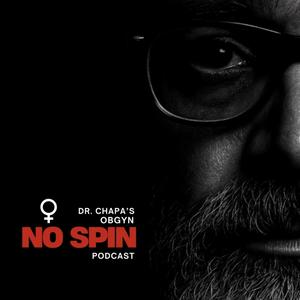
Hämta den kostnadsfria radio.se-appen
- Bokmärk stationer och podcasts
- Strömma via Wi-Fi eller Bluetooth
- Stödjer Carplay & Android Auto
- Många andra appfunktioner
Hämta den kostnadsfria radio.se-appen
- Bokmärk stationer och podcasts
- Strömma via Wi-Fi eller Bluetooth
- Stödjer Carplay & Android Auto
- Många andra appfunktioner


Dr. Chapa’s OBGYN Clinical Pearls
ladda ner appen,
börja lyssna.


